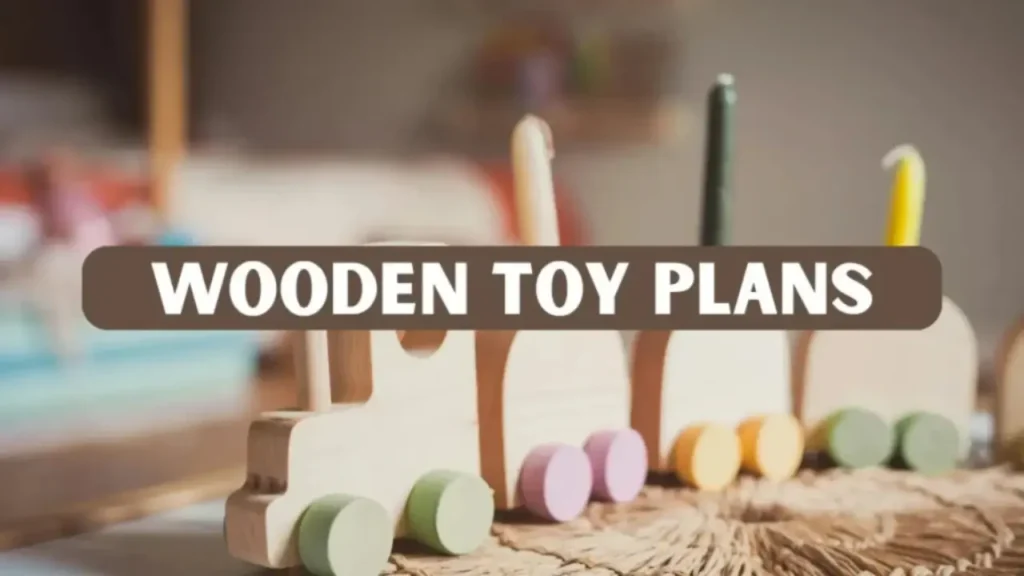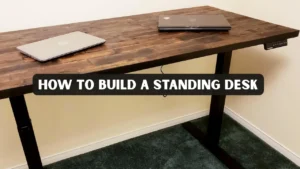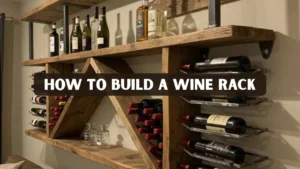Wooden toys have a unique charm that never fades. They carry memories of childhood, creativity, and craftsmanship. Long before mass-produced plastic toys dominated the market, wooden creations were loved for their natural texture, durability, and timeless design. Today, woodworking enthusiasts around the world continue to build these beautiful pieces using Wooden Toy Plans, passing down skills and traditions to future generations.
Creating toys by hand is not just about crafting objects for play; it is about blending creativity with purpose. Every cut, joint, and polish reflects patience and passion. Whether you are designing a miniature car, a rocking horse, or a dollhouse, working from detailed plans gives you a framework to bring imagination to life. These designs help makers transform simple wood into cherished keepsakes that tell a story.
What Are Wooden Toy Plans?
Wooden Toy Plans are detailed blueprints that guide woodworkers through every stage of toy making. These plans include precise measurements, diagrams, and step-by-step instructions to help builders achieve accuracy and safety. A good plan eliminates uncertainty, allowing both beginners and experienced craftsmen to focus on creativity rather than guesswork.
Plans vary widely depending on complexity. Some cover basic toys like stacking blocks or pull-along animals, while others include intricate designs such as model trains or multi-room dollhouses. They help ensure that each component fits together perfectly and that the finished piece is both beautiful and functional. Following a tested plan provides a foundation for learning while also giving makers the freedom to adapt and personalize their designs.
Why Choose Wooden Toys?
Wooden toys stand out for their sustainability, strength, and natural feel. Unlike plastic toys that tend to wear out or break, wooden creations are built to last through years of play while retaining their charm. Parents appreciate them for being safe, non-toxic, and environmentally responsible. Each piece reflects a thoughtful balance between durability and design, offering children something tangible and enduring rather than disposable and short-lived.
The sensory qualities of wood also make these toys special. The warmth of its texture, the comforting weight in hand, and the subtle scent of natural finishes create an engaging experience that plastic cannot replicate. Wooden toys inspire active play and imagination. A simple wooden car or animal figure can become part of countless adventures in a child’s world. For the maker, crafting these toys delivers a sense of fulfillment that goes far beyond the finished product, embodying patience, creativity, and emotional connection in every detail..
Essential Tools and Materials for Building Wooden Toys
Before beginning your project, it is important to prepare your workspace and gather suitable tools. You will need a measuring tape, a handsaw or jigsaw, clamps, and fine-grit sandpaper. A drill and small bits are helpful for making axle holes or fitting joints. Carving knives or chisels allow you to shape fine details that add character to the finished piece.
Choose wood that is smooth, sturdy, and safe for children. Maple, birch, and pine are excellent options because they are easy to work with and resist splintering. When finishing your toys, always use child-safe materials such as natural oils, beeswax, or water-based paints. These finishes protect the wood while maintaining its natural beauty. Avoid varnishes or sealants that contain chemicals, as children often handle toys closely.
Safety should remain a top priority throughout the process. Round every corner, sand every surface, and ensure there are no small detachable parts that could pose a hazard to young children.
Step by Step Guide to Building Wooden Toys
The process of creating wooden toys begins with careful planning. Start by selecting a plan that matches your current skill level. If you are new to woodworking, begin with something simple like stacking blocks or a pull-along animal. Intermediate woodworkers may prefer projects such as toy trucks or puzzles, while experienced makers can take on complex builds like rocking horses or dollhouses.
After selecting your plan, study it thoroughly. Understanding each measurement and assembly step before cutting saves time and prevents mistakes. Cut your wood pieces according to the dimensions provided, keeping grain direction in mind for added strength. Sand the edges to remove splinters and smooth the surfaces before assembly.
During assembly, use clamps to hold pieces securely while gluing. Check alignment carefully, ensuring that moving parts operate freely and that all joints fit snugly. Once assembled, you can add painted details, small carvings, or decorative accents that make the toy truly unique. The final step involves applying a protective finish to highlight the grain and ensure longevity.
Types of Wood Toy Plans to Explore
There are countless ways to bring creativity into toy making, and choosing the right type of project depends on your skill level, tools, and goals. Some builders prefer simple designs that emphasize functionality, while others enjoy more complex creations that highlight fine craftsmanship. Exploring different types of Wooden Toy Plans helps you discover which projects best match your interests and abilities.
Classic Toy Vehicles
Classic toy vehicles such as cars, trucks, and trains are among the most popular projects for beginners. They require simple cuts and straightforward assembly but offer plenty of room for customization. Adding details like engraved initials or natural stains gives each vehicle a distinctive appearance. These projects help woodworkers practice shaping, drilling, and assembling moving parts while keeping safety and balance in mind.
Dollhouses and Furniture
Dollhouses and miniature furniture appeal to woodworkers who appreciate precision and detail. These projects often include intricate cuts and fine finishing, making them perfect for improving accuracy and patience. They also allow creative freedom through decoration and color choices, turning each dollhouse into a unique piece that reflects both skill and imagination.
Educational and Puzzle Toys
Educational toys like alphabet blocks, stacking rings, or simple puzzles combine play with learning. These designs are functional and purposeful, promoting problem-solving, coordination, and recognition skills in children. For the maker, they provide an opportunity to experiment with design simplicity and natural finishes that highlight the beauty of the wood.
Rocking Horses and Animal Figures
Rocking horses and pull-along animals are charming projects that bring movement to playtime. They require careful shaping, smooth curves, and stable construction to ensure safety and balance. Building these toys challenges intermediate to advanced woodworkers to blend strength, durability, and artistry in one design.
Collector and Decorative Toys
Decorative and collectible wooden toys, such as model ships or airplanes, allow experienced makers to explore fine craftsmanship. These projects involve detailed carving, multiple assembly stages, and finishing techniques that turn simple wood pieces into works of art. While they may not be used for play, they beautifully showcase the maker’s skill and dedication to the craft.
Safety and Finishing Standards
Every toy you build should meet strict safety standards to ensure it is both durable and child-friendly. Always use non-toxic adhesives, paints, and finishes that are safe for children. Each surface must be thoroughly sanded to prevent splinters, and every joint should be firmly secured to guarantee long-lasting strength. The materials you choose should support the toy’s stability and prevent it from breaking under pressure.
Sharp corners, small detachable components, and loose parts must be avoided entirely. Before gifting or selling your creation, test each section by applying gentle pressure to ensure it can withstand regular use. Careful inspection not only enhances safety but also reinforces the toy’s overall quality and reliability, giving both maker and recipient confidence in its craftsmanship.
Adding Personal Touches to Your Wooden Toys
One of the most satisfying aspects of woodworking is adding personality to your creations. You can engrave names or messages, paint in custom colors, or combine different wood types for contrast. Some makers enjoy burning small designs into the wood for a rustic finish, while others leave the surface natural to showcase its grain.
Customizing toys gives them sentimental value. A toy car built for a child’s birthday or a handcrafted puzzle made as a gift becomes a keepsake that carries emotional meaning. Even subtle details like rounded handles or decorative wheels make the finished toy more distinctive and personal.
Real-World Experiences from Makers
Many woodworkers begin their journey by building a single toy for a loved one. One craftsman started by making a wooden airplane for his son and later began designing and selling his own Wooden Toy Plans online. Another artisan shared how she transformed her hobby into a small business after neighbors began requesting custom toys.
These experiences highlight the community spirit and fulfillment that come from creating by hand. Making toys allows individuals to connect craftsmanship with emotion, producing items that reflect care, patience, and artistry. The learning process also builds discipline and appreciation for fine woodworking.
Benefits of Making Wooden Toys Yourself
Creating wooden toys brings multiple rewards. It enhances creativity and teaches problem-solving as each step involves decision-making and precision. Working with wood encourages mindfulness; the act of sanding, shaping, and assembling is calming and deeply satisfying.
For families, woodworking can become a meaningful bonding activity. Parents and children can collaborate on simple projects, fostering curiosity and respect for craftsmanship. The finished toys also promote sustainable values by reducing dependence on plastic and encouraging the use of renewable materials. In many ways, building toys strengthens both skill and character.
Choosing the Right Plan for Your Skill Level
Selecting a plan that matches your experience is essential to success. Beginners should look for designs with minimal parts and straightforward joints, such as pull toys or stacking blocks. Intermediate builders might enjoy projects that incorporate moving parts or multiple materials, while advanced woodworkers can experiment with articulated figures, musical boxes, or dollhouses.
Read the plan carefully before cutting any material. High-quality plans include visual diagrams, cutting lists, and assembly notes. Studying these details ensures smoother progress and reduces waste. Once comfortable with basic designs, you can begin modifying plans to create your own unique toys.
Finishing Techniques for a Professional Look
Finishing adds the final touch to your wooden creation. A natural oil finish brings out the richness of the grain and gives a soft glow. Water-based paints introduce playful colors that are safe for children. Wax finishes provide a polished, tactile feel that protects against wear.
Each method has its advantages, and the choice depends on the toy’s purpose. Always allow each coat to dry fully before handling. Proper finishing not only enhances beauty but also ensures durability and safety for years of play.
Turning Wooden Toy Making into a Small Business
For many, toy making evolves from a hobby into a rewarding business. Start small by creating a few well-crafted pieces and showcasing them at local fairs or online marketplaces. Present your toys with professional photos and transparent descriptions of materials and finishes. Buyers value honesty about the craftsmanship and safety behind each product.
Building a brand around quality and sustainability can set your work apart. Share behind-the-scenes photos or videos on social media to build credibility and connect with your audience. Over time, consistent craftsmanship and positive reviews can help you establish authority and trust in the handmade market.
Common Mistakes to Avoid
Rushing through a project often leads to uneven cuts or weak joints. Take your time to measure twice before cutting and to double-check assembly steps. Ignoring the natural direction of the wood grain can result in splintering or breakage. Using cheap glue or paint can ruin the finish and shorten the toy’s lifespan.
Another common mistake is skipping the safety inspection. Always test the toy’s stability, strength, and finish before use. A careful, patient approach results in a product that looks professional and lasts for generations.
Conclusion
Building toys from Wooden Toy Plans is a fulfilling journey that combines creativity, skill, and tradition. Every toy you make becomes part of a legacy, representing both craftsmanship and emotion. Whether you are constructing simple blocks for a toddler or an intricate model for a collector, each project offers opportunities to learn, refine, and create with purpose.
By using safe materials, thoughtful design, and attention to detail, you can produce wooden toys that not only entertain but also inspire imagination and preserve the spirit of handmade craftsmanship.
FAQs
What type of wood is best for making toys?
Maple, birch, and beech are excellent options because they are durable, smooth, and safe for children.
Can I sell toys made from purchased plans?
Yes, most plans allow small-scale commercial use, but review the licensing terms before selling.
How can I make sure the toys are safe for toddlers?
Use non-toxic finishes, round all edges, and test for loose or detachable parts.
Where can I find reliable plans?
You can explore detailed and well-tested Toy Plans available from trusted woodworking communities that share guides suitable for every skill level.
How should I price my handmade toys?
Consider your material costs, time investment, and craftsmanship quality. Handmade items often command higher prices because they represent skill and dedication.




